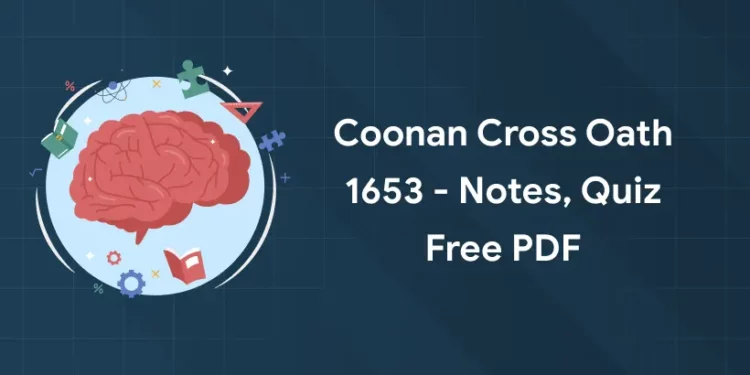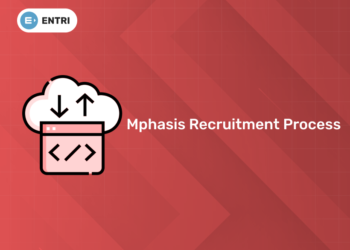Table of Contents
The Coonan Cross Oath, also known as Koonan Kurishu Satyam, was a public declaration made on January 3, 1653, by Syrian Christians in Kerala vowing to stand against the rule of Latin Roman Catholics. The Oath was a direct result of the Roman Catholic Church’s continuous interference in the lives of people and the forced conversion to Roman Catholic beliefs.
Coonan Cross Oath 1653 – Notes, Quiz Free PDF
Coonan Kurishu Sathyam or the Oath of Leaning/ Bending Cross is an important event in the history of Christianity in Kerala. Let us read to learn more about Coonan Cross Oath.
Coonan Cross Oath Summary
1: Who was the first woman President of India?
Members of the Saint Thomas Christians of the Malankara publicly declared and affirmed on January 3, 1653, in Mattancherry, that they would not bow down to the Jesuits and Latin Catholic hierarchy, nor accept Portuguese dominance (Padroado) in both religious and secular life. This was known as the Coonan Cross Oath, also referred to as the Great Oath of Bent Cross, the Leaning Cross, or the Slanting Cross. This was a result of the Portuguese attempts to make the Nazranis reject their rituals and bring their faith under Rome and the Pope.
Free UPSKILLING Courses!
Take your first step toward mastering in-demand skills, acing interviews, and securing top-tier jobs with Entri's free upskilling courses.
Start Learning!Key Points
- The Coonan Cross Oath took place in AD 1653 January 3rd.
- They gathered near the Old Cross of Mattancherry.
- The oath of Coonan Cross was a result of the constant religious oppression St. Thomas Christians faced from the Portuguese and the clergy of the roman catholic church.
- They vowed to never subjugate to the Portuguese or Pope.
- They also vowed to reject the declarations of the Synod of Diamper.
- What triggered this event was the rumour that Mar Ahettella, who was coming to Kerala to resolve the conflict in the community, was murdered by the Portuguese.
- The Syrian Christians designated Archdeacon Thomas, also known as Mar Thoma 1, as their Metrapolita following the Coonan Cross Oath.
Importance of Coonan Cross Oath
As we discussed above the Coonan Cross oath played an important role in the Christian history in Kerala. This event is the reason for the splitting of the Syrian Christian community into new two categories.
History of Coonan Cross Oath
In addition to the Portuguese, missionaries from Augustinians, Franciscans, Jesuits, and Carmelites also arrived in Kerala and successfully converted a large number of people to Christianity. The St. Thomas Christians who adhered to the Syrian Rites were rejected by the Latin priests. An attempt was made to subjugate them to the Pope through the Synod of Diamper.
Religious Coercion by Archbishop of Goa
Alexio Da Menezes, the Archbishop of Goa, attempted to coerce Archdeacon Geevarghese of the Pakalomattom family, the leader of the Malankara Church, into giving the Roman Catholic Church authority over the Malankara Church. All the representatives of the Malankara church, including Arch Deacon Geevarughese, unanimously refused to comply with the request. Using his connections with the Cochin Raja (King), Archbishop menezes called a gathering of all Church delegates at Udayamperur. The King threatened to seize the properties of those who did not show up for the meeting. Thus, on June 20, 1599, the historically momentous Udayamperur Synod was held under the direction of Bishop Menezes, the Portuguese governor, as well as senior government officials, armed Portuguese soldiers, and the Raja of Cochin.
Decrees of Synod of Diamper
There were 660 ordinary people, 10 deacons, 133 priests, and Arch Deacon Geevarghese in attendance. Decisions to embrace the Pope’s authority and the beliefs and customs of the Roman Catholic Church were imposed during the summit. The decrees were signed by the Malankara Nazrani Syrian Christians out of fear for their own King and the Portuguese resistance. They grudgingly submitted to the Roman authority.
Following the Synod, churches underwent a Latinized reorganization and a conversion to a Latinized service structure. Syrian Christian writings were inspected and burned here. The Syriac liturgy’s mass was changed to match the Latin mass. They shattered the Kerala Church’s long-standing ties to the Antioch Patriarchate and established the Roman Pontiff’s authority. Seminaries were established in place of the Malpanates’ previous educational system. The curriculum included Latin.
The Arrival of Mar Ignatius Ahathalla
In 1652, the Patriarch of Antioch, Mar Ignatius Ahathalla, travelled to Malankara after learning of the persecution that his congregation was facing there. After reaching Surat, he went to St. Thomas Mount in Mylapore. However, he was apprehended by the Jesuits in Mylapore and given over to the Portuguese, who placed him on a ship destined for Goa from Madras. While on a journey to Mylapore, two Syrian Christian deacons from Malankara, Chengannur Itty and Kuravilanagad Kezhakkadethu Kurian, learned of the tragic event. After they saw Mar Ahathalla, they were able to acquire a letter from him designating Archdeacon Thomas as the Episcopa of Malankara, on the basis that an appropriate ordination would follow as soon as circumstances allowed. Mar Ahathalla was transported to Cochin in the interim.
Execution of Mar Ignatius Ahathalla
While travelling, the ship made a stop in Cochin. Upon learning of this, 25,000 Nazrani Christians marched to Cochin Harbor and called for Mar Ahatallah’s release. They failed to set Mar Ahathalla free. He was transported by ship to Goa, where he was executed by burning at the stake. However, word got out that he perished in the Arabian Sea while wearing a millstone around his neck. The Syrian Christians were on the edge of an emotional breakdown as word of this brutality circulated.
Coonan Cross Oath
About 25,000 Syrian Christians gathered in Mattancherry Churchyard on Friday, January 3, 1653 AD, under the direction of Archdeacon Thomas and a Knanaya priest named Anjilimmoottil Ittythomman Kathanar (Rev. Itty Thomas). They vowed to drive out the Jesuits, never submit to any church authority or the Portuguese Archbishop of Goa, Francis Garcia, who had fallen under Roman rule, and to stay with the Archdeacon until they received a bishop from the Eastern Church while upholding their ancient customs and rituals. The gathering for the Koonan Cross Oath was organized mostly by Rev. Itty Thomas.
There were so many people and everyone could not hold on to the cross at the same time. So they tied ropes to the cross and held these ropes in their hand while taking the oath. It is said that the cross bends slightly because of the large number of people holding onto these ropes, hence it was named the Bend Cross or Coonan Cross. According to legend, just 400 of the 2,00,000 Malankara Nazaranis stayed with Roman Archbishop Garcia. This historic occurrence is referred to as the Koonen Kurishu Sathyam (The Slanting/Bent Cross Oath). The Coonan Curishu Oath safeguarded the St. Thomas tradition, which helped to protect the Malankara Orthodox Church’s legacy and lengthy history.
Aftermath of Coonan Cross Oath
Immediately following the Coonan Cross oath, they gathered at Alangatt, and twelve Syrian priests consecrated Archdeacon Thomas of the Pakalomattom family, who had received an order of authority from Patriarch Ahathalla and declared himself the Episcopa of Malankara, giving him the name Mar Thoma I (1653 – 1670), the first in a long line that would last until Mar Thoma IX in 1816. As a result, he became the Malankara Church’s first indigenous bishop. Malankara Church once again became an essential member of the Syrian Orthodox Church, embracing the same customs, rites, and liturgy as previously.
Coonan Cross Oath Present Significance
The Church was split in two by this uprising. Rome’s designated prelates were still recognized by one group (Pazhayacoor Suryanis), while the other group (Puthencoor Suriyanis) separated from Rome. The Syrian Orthodox Church of India is the name given to this latter group. Those who stayed loyal to the Romans became known as Syrian Roman Catholics (today Syro-Malabar Rite, ceremonial language Syriac).
Free UPSKILLING Courses!
Take your first step toward mastering in-demand skills, acing interviews, and securing top-tier jobs with Entri's free upskilling courses.
Start Learning!Coonan Cross Oath Quiz Free PDF
The Coonan Cross Oath Quiz free PDF is provided in downloadable format below for your convenience.
Coonan Cross Oath Quiz
Some of the frequently asked questions from the portion of the Coonan Cross Oath are given below. Attempt these questions and note down your marks before looking at the answer key to understand your level of comprehension and memory of this topic.
- What year did the Diamper Synod take place?
- AD 1598 June 20 to 26
- AD 1599 July 20 to 26
- AD 1599 June 20 to 26
- AD 1598 July 20 to 26
- Who was the head of the Diamper Synod?
- Alexis de Mensis
- Alvarez Cabral
- Thoma 1
- Saint Thomas
- The Oath of the Bend Cross was taken when?
- AD 1653 January 3rd
- AD 1654 January 2nd
- AD 1653 June 3rd
- AD 1653 June 2nd
- Which location was Alexis de Meneses the Methran of?
- Mahi
- Goa
- Angamali
- Kochi
- Who was the priest sent by the eastern church to resolve the conflicts the Portuguese created among the Syrian Christians?
- Mar Ignatius Ahathalla
- Alexis de Mensis
- Mar Thoma 1
- Itty Thomas
Coonan Cross Oath Quiz Answers
Have you attempted the Coonan Cross Oath quiz given above? How much were you able to score? The correct answers to the questions above are given below.
- AD 1599 June 20 to 26
- Alexis de Mensis
- AD 1653 January 3rd
- Goa
- Mar Ignatius Ahathalla











